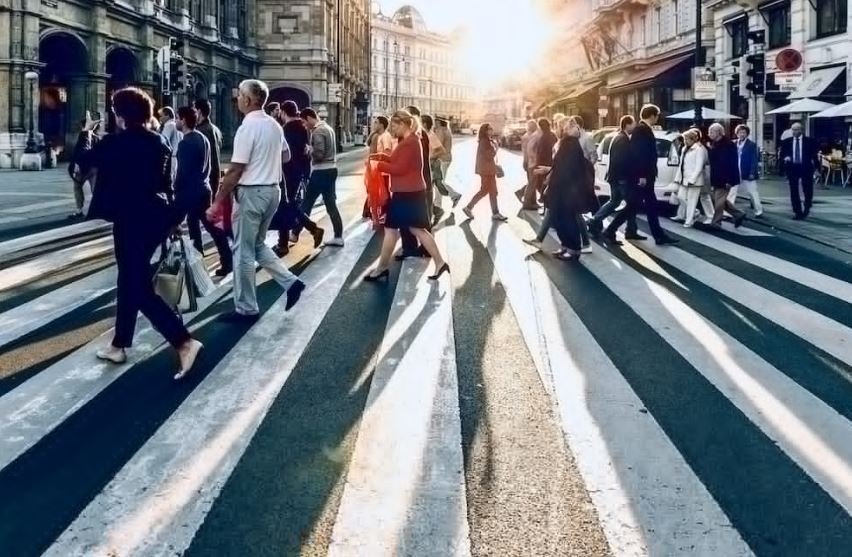Auto
How Drivers Can Avoid Pedestrian Accidents

One every 88 minutes – that’s how many pedestrians died in car accidents in the United States in 2017, according to the CDC. That amounts to a tragic 5,977 for the entire year. In 2019, the number of pedestrian deaths rose to 6,205. The CDC notes that pedestrians are about 1.5 times more likely to die in car accidents than vehicle occupants. This makes sense, considering vehicle occupants are protected by the car and possibly car features such as seat belts.
But even when accidents aren’t fatal, the harm caused to pedestrians by car accidents can be grave and life-altering. Non-fatal accidents involving pedestrians are also much more common than fatal ones. The CDC notes that about 137,000 pedestrians were treated in emergency rooms because of car accidents in 2017.
If these statistics on harm to pedestrians aren’t sobering enough, consider the consequences for drivers if they are found liable in such an accident. No one wants to be responsible for injuring another person, or worse, causing a wrongful death. Yet civil courts see these kinds of cases every day. Drivers can do a lot to keep pedestrians out of hospitals (or worse) and keep themselves out of courtrooms.
What causes accidents involving pedestrians?
The statistics above reflect a persistent problem in the U.S. But with awareness, education, and a commitment to safety, it’s a problem that can be addressed. Since cars present such a danger to pedestrians, drivers stand to make a big difference when it comes to pedestrian safety. But how?
The first step is understanding the risk factors for car accidents involving pedestrians. In each situation, the actions taken by drivers can be the difference between life and death.
The following situations are the most common factors in car accidents involving pedestrians:
- Intoxication (pedestrian or driver): According to the CDC, 47% – or nearly half – of car accidents resulting in pedestrian death in 2017 involved intoxication on the part of the driver, the pedestrian, or both. 33% of those accidents involved pedestrian intoxication (a blood alcohol content of .08 or more), while 17% involved driver intoxication. Alcohol impairs judgment, so pedestrians or drivers who are intoxicated are more likely to engage in risky behaviors, such as jaywalking (pedestrians) or speeding (drivers).
- Child pedestrians: The CDC reports that one in every five children under the age of 15 who were killed in car accidents in 2017 were pedestrians.
- Elderly pedestrians: That same year, the CDC reports that pedestrians aged 65 years or older made up 20% of all pedestrian deaths and 10% of all pedestrian injuries.
- High vehicle speed
- Urban environments
- Nighttime driving
The role of drivers in pedestrian safety
Obviously, drivers are not solely responsible for accidents involving pedestrians. A driver cannot control whether a pedestrian suddenly steps into the road where there is no intersection. However, drivers can do a lot to reduce the risk of death and injury to pedestrians if an accident occurs. Beyond following the rules outlined in the driver education program that allowed you to obtain a driver’s license, you should follow the tips below whenever you get behind the wheel.
Driver tips for pedestrian safety
Do not drink and drive.
Not only is it illegal, it’s incredibly dangerous to you and to pedestrians. Remember, almost half of all car accidents involving pedestrians also involve alcohol.
Do not drive distracted.
Distracted driving has become something of an epidemic. Between the ubiquity of cell phones and increased traffic and long commutes, drivers consistently admit to engaging in behaviors such as texting, selecting music, and more while driving. Any activity that takes your eyes off the road for even a second is dangerous and should be avoided for both your safety and others’.
Follow speed limits.
The CDC reports that higher vehicle speeds increase both the chances of colliding with a pedestrian and the severity of any injuries that occur. To promote pedestrian safety, do not speed.
Use extra caution in risky situations.
Avoiding alcohol, distractions, and speeding are the bare minimum of safe driving, but promoting pedestrian safety also involves extra caution in situations where accidents with pedestrians are more likely. These include:
- School zones, residential areas, or any areas where children are likely to be walking
- Areas where elderly pedestrians are common, such as near nursing homes
- In urban areas
- At night, especially in areas with no intersections or poor lighting
- In poor weather conditions where driver visibility is low
- At crosswalks – for example, do not pass a vehicle stopped at a crosswalk. There may be a pedestrian crossing in front of the car that you cannot see.
Check out the National Highway Traffic Safety Administration guide (PDF) for more pedestrian safety measures.
Drivers are pedestrians too
As the NHTSA reminds us, everyone is a pedestrian. In other words, pedestrian safety is everyone’s concern. When you get behind the wheel, the decisions you make as a driver can save a life, not to mention prevent grief on the part of a pedestrian’s loved ones and the guilt that comes with harming a pedestrian in a preventable accident. When everyone commits to pedestrian safety, everyone benefits.
-

 Celebrity4 weeks ago
Celebrity4 weeks agoIs YNW Melly Out Of Jail? What Is The YNW Melly Release Date, Career, Early Life, And More
-

 Sports4 weeks ago
Sports4 weeks agoMore Than Just a Game: How College Sports Can Shape Your Future
-

 Tech3 weeks ago
Tech3 weeks agoAI Software: Transforming the Future of Technology
-

 Tech3 weeks ago
Tech3 weeks agoAll About Com. Dti. Folder Launcher: Features, Benefits, Tips, And More













